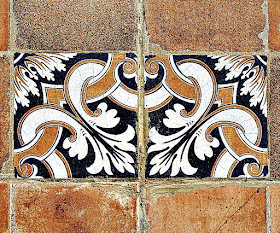October 10, 2019
AGADIR, Morocco
Arrive: 7:30 AM
Sunrise 7:37 AM
Temp. 82F Overcast
Agadir, situated on the Atlantic Ocean near the foot of the Atlas Mountains,
is a popular holiday destination with lovely beaches and a vibrant nightlife.
It has a mild winter climate, an important fishing and commercial port, and
is famous for seafood and agriculture. We did see miles of tomatoes being
grown under cover on the day long shore excursion.
The morning was somewhat dreary when leaving on the all day tour via comfortable
buses. We drove to this overview of Agadir and visited the Oufella (Kasbah) in
one of the oldest districts in the city.
The fortress with its winding streets built in 1572 was destroyed in the major
earthquake of 29 February 1960. . . . . and the area is still under repair!
Our friend Kim with her usual fun "I'll try anything" personality, climbing
aboard the one hump dromedary - her hubby Rob in the background.
I love the expressions on the faces of camels - they always appear to be smiling with
a "come hither" look under those long eyelashes!
We continued on to the imperial city of Taroudant, stopping here for refreshments -
cookies and cooled camel's milk!
Taroudant is framed by ramparts that showcase the city - one of the most
beautiful in Morocco. Walls are steeped in history and its towers have stood
tall for five centuries to protect the former capital of the Saadian sultans.
Taroudant has a great legacy and a rich history but is not a museum-city stuck
in time to memorialize its bygone glory. Here, the bustle of modern life blends
seamlessly with heritage and tradition.
Why are the goats climbing trees?
The area around Taroudant has become famous for the production of
argan oil - known around the world now especially in beauty products such
as hair shampoos, conditioners, and many lotions and potions where the
essence and oil is said to promote well-being.
Tree goats. This eye-catching phenomenon occurs in argan (or argania spinosa),
a thorny tree with a gnarled trunk endemic to southwestern Morocco and a small
section of western Algeria. Argan trees produce a fruit that must smell and
taste delicious because it attracts goats up onto their branches.
Quite an unexpected sight - our Moroccan guide informed us it was very
commonplace and the goats are actually 'pruning' the trees.
From the look of their somewhat greasy coats, I'm thinking they must partake
of the oily nuts for their three meals a day!
Momma and cute baby.
So, while the men apparently support the 'cafe society'. . . . . . . ladies below.........
. . . . . . .were working hard cracking and pressing the argan nuts to extract
their essence and concoct the oil!
Regarding the visit to an actual shop with a chance to purchase argan oil
products - which I passed on as I was not thrilled of the thought of leaks
in my checked baggage - my favorite part was these beautiful
green pots outside. . . . . . . if only I could have brought these home!
By then we were all quite hungry and, on the long return drive to Agadir
were welcomed to a late lunch at the well-known Chem Ayour Restaurant.
MENU
Moroccan Salad
Couscous with seven vegetables
Chicken Tagine
Veggie Tagine (for the likes of me)
Dessert Pastilla with milk
Wine and water
Beautiful luncheon tent.
It was a huge amount of couscous. . . . . . but very, very tasty!
That night we commenced the sail of 296 nautical miles toward the next port of call,
El Marsa, which meant a day at sea which was welcomed after visiting busy
Agadir and Taroudant.
The city of Laayoune was calling from the desert. . . . . one of the least
populated regions of the world!
"As usual I finish the day before the sea, sumptuous this evening beneath the moon,
which writes Arab symbols with phosphorescent streaks on the slow swells.
There is no end to the sky and the waters.
How well they accompany sadness"
---------Albert Camus































































